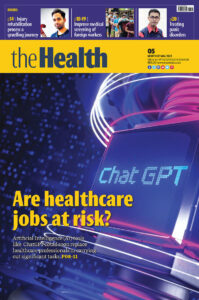Glaucoma is one of the leading causes of irreversible blindness but can be limited with early treatment.
BY KHIRTINI K KUMARAN
Glaucoma is the second leading cause of blindness, and yet many are unaware of it.
That is a pity because this permanent vision loss can be avoided if more people, especially those in the higher risk groups, were aware of proper eye screening.
In efforts to create awareness of glaucoma, a disease deemed the silent thief of sight, World Glaucoma Week (WGW), a global initiative by the World Glaucoma Association (WGA), is observed in March every year in most countries.
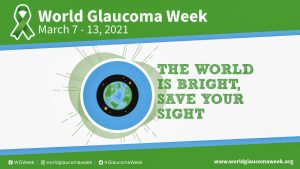 Themed The world is bright, save your sight, the WGW 2021 celebration in Malaysia was organised by the Malaysian Glaucoma Society (MGS) in collaboration with the Malaysian Society of Ophthalmology (MSO), College of Ophthalmologist, Ministry of Health Malaysia (MoH), ParkCity Medical Centre, DKSH Healthcare Malaysia, Novartis Corporation (Malaysia) Sdn Bhd, Universiti Kebangsaan Malaysia, Universiti Islam Antarabangsa Malaysia, Universiti Malaya and Universiti Sains Malaysia.
Themed The world is bright, save your sight, the WGW 2021 celebration in Malaysia was organised by the Malaysian Glaucoma Society (MGS) in collaboration with the Malaysian Society of Ophthalmology (MSO), College of Ophthalmologist, Ministry of Health Malaysia (MoH), ParkCity Medical Centre, DKSH Healthcare Malaysia, Novartis Corporation (Malaysia) Sdn Bhd, Universiti Kebangsaan Malaysia, Universiti Islam Antarabangsa Malaysia, Universiti Malaya and Universiti Sains Malaysia.
Eye screening important
WGW 2021 was launched on March 7, 2021, via an online opening ceremony, streamed live at MGS’s Facebook and YouTube pages. In her welcoming address, WGW 2021 chairperson Prof Dr Liza Sharmini Ahmad Tajudin noted that the word ‘glaucoma’ was still foreign within society. Thus, she hoped the special week would bring about awareness, and more people, especially those at risk, would get proper eye screening.
“Hopefully, blindness due to glaucoma can be reduced. Engaging activities were arranged for a week involving various institutions and most hospitals in Malaysia.
“This effort will continue throughout the year, not just for the week,” said Dr Liza, who is also the Vice-Chairperson of MGS.
Dr Fang Seng Kheong, the current president-elect of the Asia Pacific Glaucoma Society and Chairperson of MGS, welcomed and thanked the guest-of-honour, Deputy Health Minister I Datuk Dr Noor Azmi Ghazali, for gracing the occasion.
Dr Fang, from International Specialist Eye Center (ISEC), also serves as the advisor for WGW 2021.
“The 2021 theme reflects the hope that with regular testing, people continue to see the world around full of beauty, charm and adventure. Glaucoma is one of the leading causes of irreversible blindness, but the damage can be limited and sight saved with early treatment.
“We also want glaucoma patients to get their relatives involved as the chances of them getting glaucoma are 10 times higher than someone with no glaucoma history in their family.”
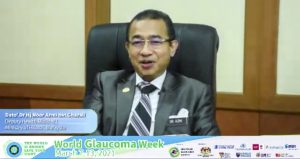
Dr Noor Azmi, in his opening speech, hoped WGW would increase knowledge and awareness about glaucoma among the public as it is relatively less popular and less mentioned by the general public as the disease has no symptoms or signs, he said it was not surprising patients tended to visit an ophthalmologist only when the field of vision becomes very narrow and has reached an advanced stage.
“Most glaucoma patients are the elderly, who may be more convinced that poor vision at twilight age is normal. This complacent nature has caused many glaucoma patients to lose their sight.
“Hopefully, such efforts can help the general public to come forward to seek treatment at an earlier stage.”
He also congratulated the organisers for their efforts to increase glaucoma awareness and hold the event according to the new norms.
The launch by Dr Noor Azmi was followed by the showcase animated video on glaucoma awareness by Santen.
Vice-President of DKSH Healthcare Malaysia (DKSH) Gary Chee shared his appreciation for the opportunity to collaborate in WGW.
Since last year, DKSH and Novartis have been actively collaborating with key ophthalmologists from both the private and public sectors to organise disease awareness programs via social media platforms on various topics related to eye health, not limited to glaucoma only.
“We are proud to be part of a global initiative during the WGW to raise awareness on the importance of frequent eye check-ups and early detection to save your sight in Malaysia.”
Online WGW 2021 programmes
Among the programmes planned for the WGW 2021 were the Ask Us Anything: Open Discussion and Glaucoma Chats series, streamed on Facebook and YouTube, discussing different aspects of glaucoma and interviewing patients to share real-life experiences to create awareness.
Three different chat series sessions featured patients with steroid-induced glaucoma, juvenile open-angle glaucoma, and primary open-angle and closed-angle glaucoma.
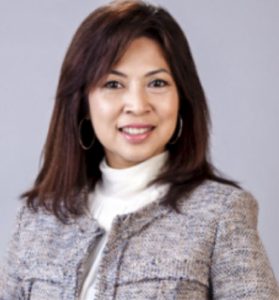
The first chat, Glaucoma Chat 1: Steroid Induced Glaucoma, was moderated by associate Prof Dr Mimiwati Zahari, an ophthalmologist from UM Specialist Centre.
Dr Mimiwati started with an introduction to glaucoma before further explaining steroid-induced glaucoma.
Glaucoma is the result of damage to the optic nerve. The nerve damage is usually related to increased internal eye pressure or intraocular pressure (IOP).
She explained that when the natural Drainage of aqueous fluid produced within the eye is blocked or inhibited, IOP can increase. When the fluid movement and IOP are directly affected by other conditions such as injuries, health issues or side effects from certain medications (steroids in particular), it is then known as secondary glaucoma.
According to Dr Mimiwati, awareness of steroid-induced glaucoma is vital as many patients take steroid medications.

The second chat, titled Glaucoma Chat II: Juvenile Open-Angle Glaucoma, was moderated by Prof Dr Norshamsiah Md Din and discussed glaucoma in young patients.
The chat series’s final session was Glaucoma Chat III: Primary Open Angle and Closed Angle Glaucoma, moderated by Dr Lee Ming Yueh, who is also the founder of the Glaucoma Support Group at ParkCity Medical Centre.
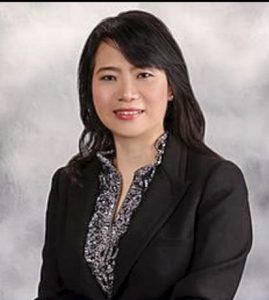
Each series was joined with patients sharing their experiences from diagnosis, treatments, and their life living with glaucoma. They encouraged the public to have frequent screening and eye examination from professionals, as early detection will have the best outcome.
Ron Chan, 76, experienced acute pain on his right eye and upon inspection was informed that his IOP went up to 50 millimeters of mercury (mm HG). He was having a glaucoma attack and was diagnosed with Primary angle closure Glaucoma.
Before the IOP was brought down to normal pressure, he was experiencing blurring of vision.
He shared: “It was quite frightening when the vision was blurry. I could only see with one eye and had difficulty judging distance. I had to be very careful and could not Drive normally. Most of the time, I had to rely on my wife to ferry me around.”
Another patient Priscilla Choo Peixi, was diagnosed with Juvenile Open Angle Glaucoma. Priscilla’s case is hereditary as her father has glaucoma as well. She was brought for regular eye examinations, which include the IOP check, since she was 15 years old.
“It was only when I was 18, my IOP increased. That is when the medication for anti-glaucoma in the form of Drops started and was manageable.
“There weren’t any symptoms of progression till I was 24. That was when my eye pressure started to be uncontrollable, and I started having frequent headaches.”
Fortunately, so far, with regular checkups and early intervention, Priscilla has not had permanent damage or vision loss due to glaucoma.— The Health



